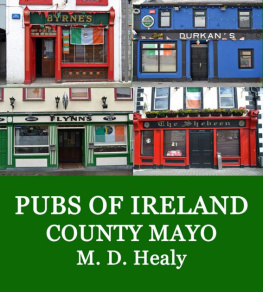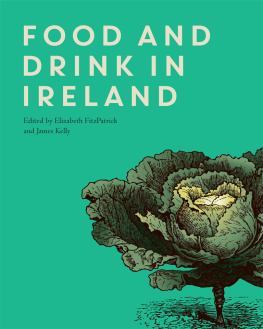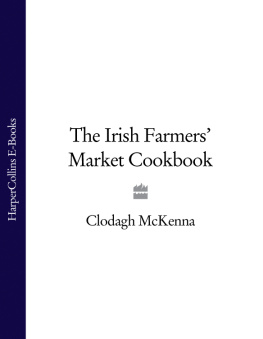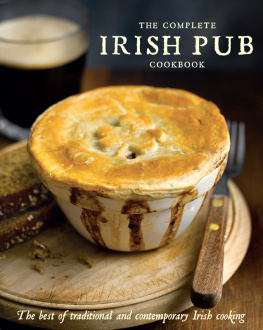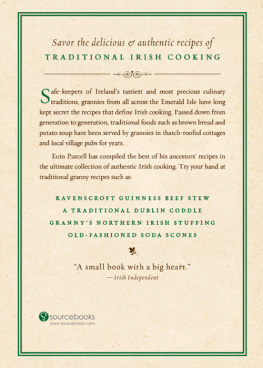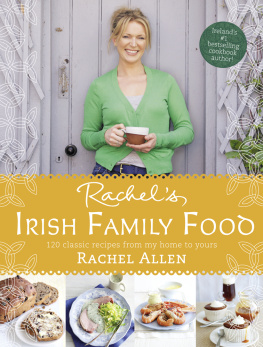Chapter One
The Water is Wide
Recipes based on dishes brought to the New World by Irish settlers
T he first Scots Irish settlers arrived in America on six ships. Led by Reverend James McGregor, son of Captain McGregor of Magilligan, County Londonderry in the northwest of Ireland, the ships landed on the north shore of Massachusetts in August 1718.
Theyd left the shores of Ireland for many reasonsreligious freedom, escape from prejudice, burdensome taxes, and lack of opportunity. These pioneering settlers would go on to establish Londonderry, New Hampshire, the first of many such-named towns in the New World.
Millions of Irish immigrants would follow in their footsteps over the centuries to come, building a new culture in Americaone rich with music, stories, faith, family, and perhaps most importantly, food.
One of those immigrant stories belongs to my great grand-parents, John and Etta.
Leaving Ireland
Andrew McGarvey was born in the west of Ireland in 1847; a year the Irish called Black 47, at the height of the Great Fam-ine, also referred to as the Great Hunger.
This was a time in Irish history when poverty and lack of opportunity strangled remote communities, leaving many fam-ilies struggling to survive. Despite its geographical proximity to what was then the wealthiest, most powerful nation on earth, much of Ireland itself was a poor, rural backwater. In those more remote, agrarian communities, one would find much profound natural beauty, but little in the way of opportunities to make a decent living.
The west of Ireland in particular, suffered because the land was poor to start with. The potato blight meant that many had to eat grass. There is a road in County Mayo called The Hungry Road where the starving people literally crawled along to beg for food or to get on a ship. Those who were able to get to soup kitchens had to build stone walls, often leading nowhere, to


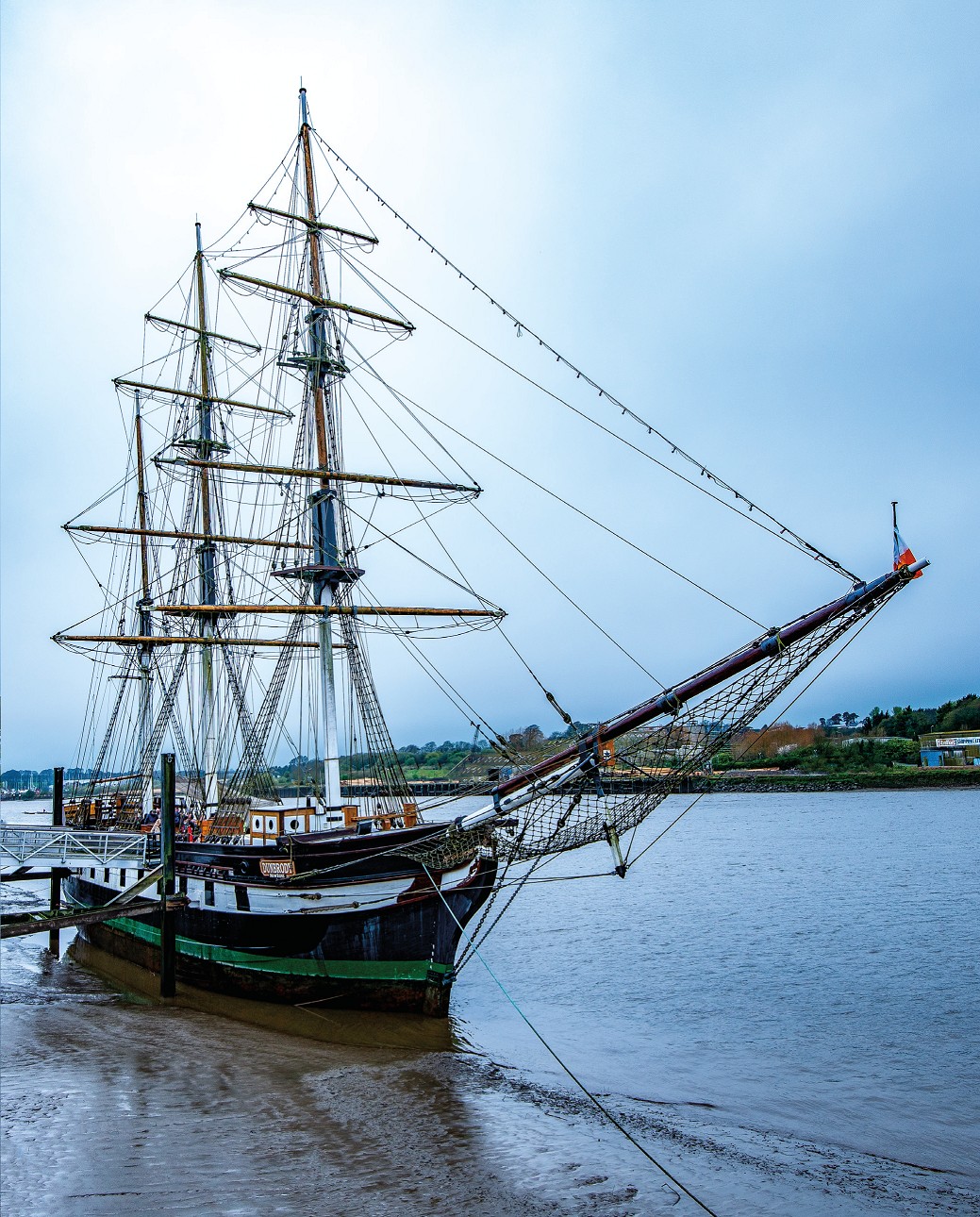
qualify for the food. The countryside is covered in these walls. Soup spoons are still found buried because of the shame of having to accept alms.
Like many of his fellow countrymen and women, Andrew struggled throughout his life to shake off the legacy of those bleak years. In 1866, he married Mary Jane, his hometown sweetheart. And by the 1870s, he had managed to purchase and work two flax spinning wheels that provided fibers for the weaving industry in Donegalsome of which are still thriving in Donegal Town today.
Andrew and Mary Jane would also go on to have three strong children, including my great-grandmother, Etta.
Etta was a slight, fine-featured young lady who was not afraid of hard work, but struggled with the sheer remote-ness of Donegal. As a grown woman without land to inherit, Etta knew that if she wanted more for her life, then she would either need to find a husband of means or find new opportunity in a different land. She chose the latter, and on her 21st birthday, made the fateful decision to leave her close-knit family, and her beloved Ireland, and take a chance on America.
The wide Atlantic beckoned Etta, and in 1896, she boarded a ship in Derry bound for the grand city of Boston.
What must she have felt following through on such a decision? Taking such a brave leap in the dark without a parachute. No welfare, no second chances. Just a few pounds in her pocket, a small suitcase with a change of clothes, and her wits about her.
One year later, a young farmers son working the land in the beautiful Mourne Mountains area of County Down decided that he, too, needed something more than what his rural Irish life was offering.
John McNeill was the youngest child in a large family of eleven, born in 1874 in the town of Aughlisnafin (og-LISH-na-fin). His father, also named John McNeill, was a sturdy old man with a strong back and a strong faith but a very small farm, a mere 30 acres. Ten other children in the brood forced young John to think about how he could make it in this world. His father worked hard, but in Ireland at the time, a lack of land meant a lack of opportunity.
At 23 years old, young John decided that his best bet was taking a chance on a new life in America. He was good with his hands, knew how to work the land, knew how to survive. So, he left everything and boarded a ship in Belfast bound for Liverpool. From there, it was a steamer bound for Boston.

One hundred years later, I would walk the path of John and Etta, feeling the same fear and excitement that comes with leaving your home place for new life in a new land.
I left Ireland for Boston in 1996, exactly one cen-tury after my great grandparents, bringing my mem-ories with me, and bringing some of my homelands recipes too.
Favorite foods of Irish people that reflect the wealth of Irish produce and culture, including seafood essentials, farm fresh produce and, of course, dishes created from our beloved potatoes. Enjoy these won-derful recipes, steeped in Irish culture, age-old Irish recipes that immigrants would have loved and carried with them across the wide Atlantic.
CHAPTER ONE
Irish Immigrant Foods
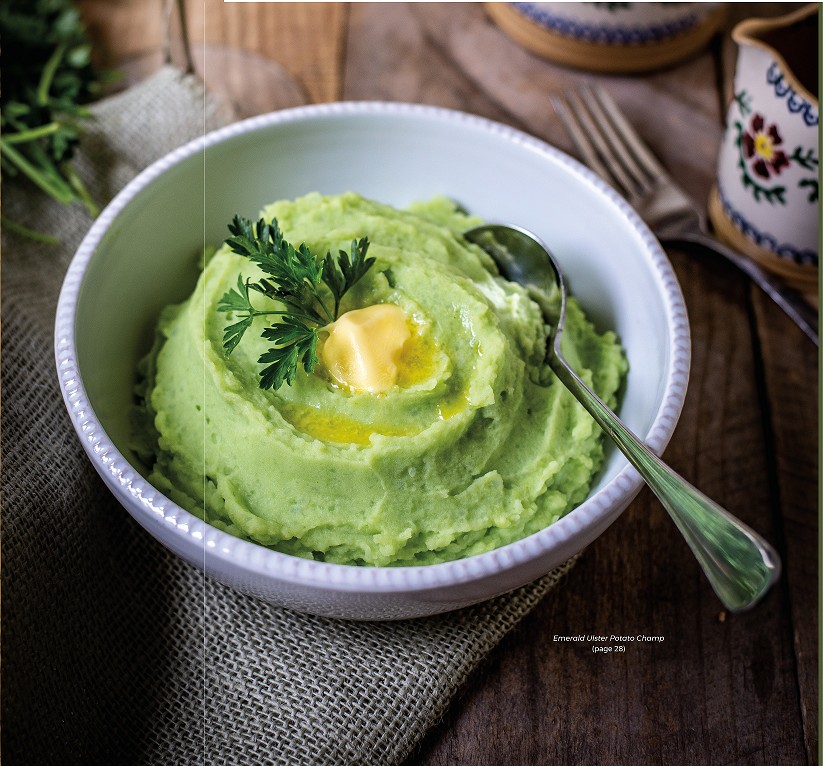
Wild Atlantic Smoked Salmon Topped Savory Pancakes
Serves 4
Scotch pancakes, also known as drop scones, are like American pancakes but much firmer with a thicker constancy. They are a perfect base for savory or sweet toppings. Early Irish immigrants would have cooked dropped scones on a griddle, over an open fire, and brought this technique to the new world during the 18th century migrations. Scones, originated in Scotland and the Scotch pancake is now just one of its many forms.
My grandmother used to serve them for afternoon tea with butter, freshly squeezed lemon juice and a sprinkling of sugar or with homemade strawberry preserves. Savory or sweet they are always a treat, and no doubt would have formed an important staple in the farmhouses of those brave immigrants as they built a life for themselves in this brave new world.
For this recipe, I have added wild Atlantic smoked salmon as the topping. It is a delicious addition to complement the pancake, with a touch of crme fraiche and lemon. Smoked salmon is a food loved by Irish people everywhere and always. Enjoy!
PANCAKE INGREDIENTS
6 ounces (1 cup) of self-rising flour
1 teaspoon of baking powder
teaspoon sugar
1 egg (beaten)
7 fluid ounces of milk
Pinch of salt
Butter and a little vegetable oil for frying
TOPPING INGREDIENTS
Smoked salmon
Ground black pepper
Olives (chopped)
Sprigs of dill
Crme fraiche
Squeeze of lemon juice
HOW TO MAKE
Sift the flour with the baking soda, salt and sugar in a bowl and make a well in the center.
Whisk the egg and milk together and pour into the center of the dry ingredients, stirring until combined.
In a heavy based pan or griddle, add a just a little butter and vegetable oil. Using a small ladle drop a small amount on to the hot pan. When one side is golden flip over and cook the other side. Remove and set aside.
Next page

